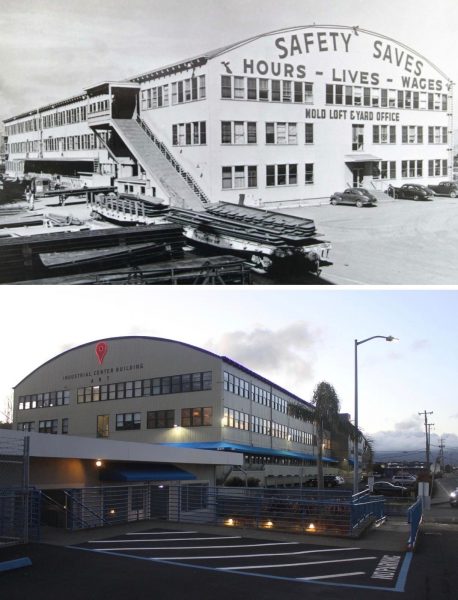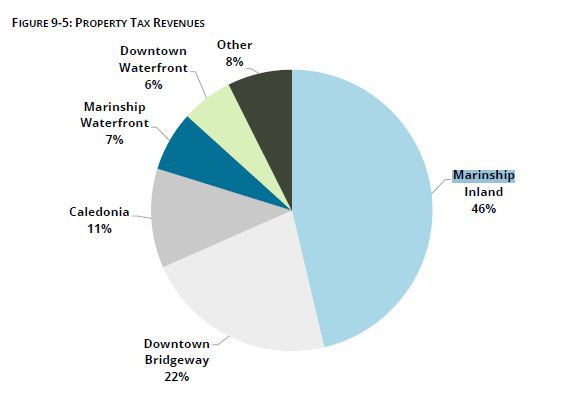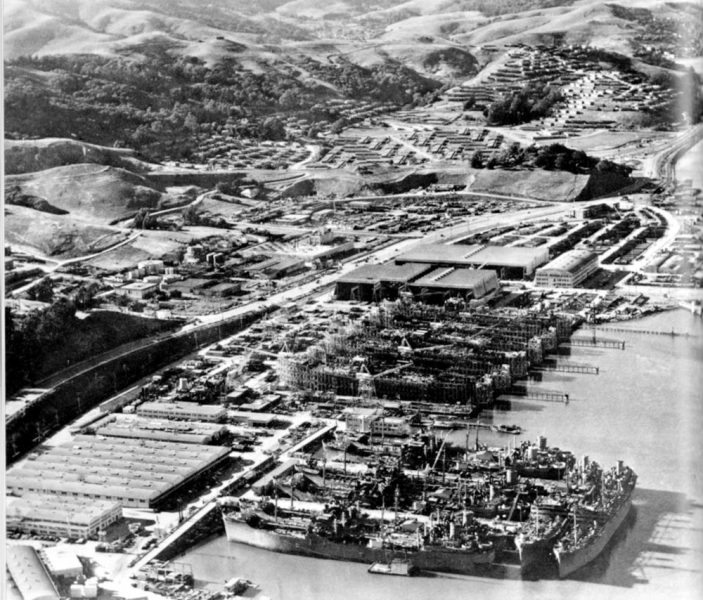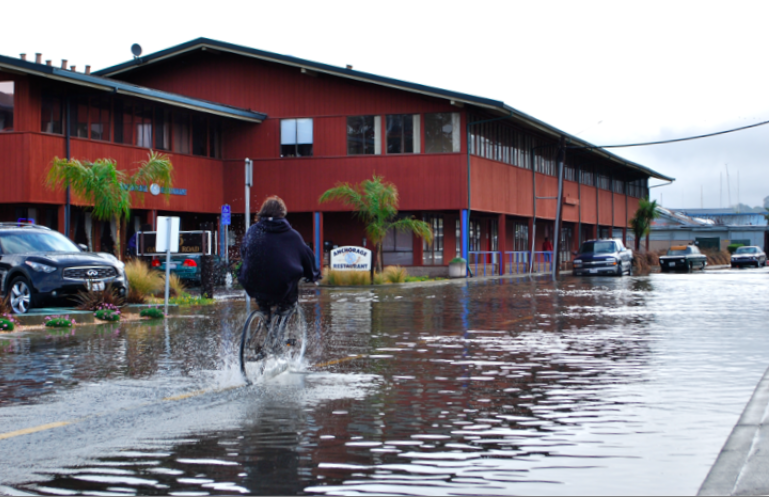
The Debate Over Sausalito’s Marinship Is Not Over
For months now, we’ve been trying to do an update about the General Plan process in Sausalito. As we reported in February, the Bay Area’s saltiest city has been discussing its blueprint for future growth, which has included debate over the Marinship, Sausalito’s working waterfront. It’s nearly impossible to occasionally dip one’s toes into General Plan news. In fact, when contacting a source recently, they asked us, “Why is Latitude wading into something like this?” In response, we repeated a concern that we expressed months ago: By the time you notice condos and sleek breweries creeping into the waterfront, it’s too late. The decisions that brought about these fundamental changes were made years ago.
It’s here that we often feel obliged to make a disclaimer: We are not anti-development. These days, nuance is often blurred by simplistic polarization. The reality is that one can support new, affordable housing and still be a strong advocate for a thriving working waterfront. Our idea of a perfect Bayside community is one with a deeply rooted culture, proud history, economic diversity and innovation, and thoughtful, sustainable development to support such a city. It sure would be nice if the average working sailor could afford to live there, too, but one step at a time.

Sausalito’s Draft General Plan is now available to the public; that Plan, which sets a vision of Sausalito through 2040, was originally up for a vote before city council elections in early November, where six candidates are running for three seats. But the General Plan vote was delayed because the public-comment period for the Draft Environmental Impact Report, or DEIR, had to be extended in order to comply with the law …
… And just like that, we already seem to be wading through procedural minutiae, and an informed citizen might rightfully ask, “How does this affect the waterfront, or my life?” Well, consider these factors:
The Raw Economics
Business has been booming in the Marinship, even through the pandemic, according to a recent report commissioned by the city, which said that Sausalito’s industrial sector was among the COVID-19 “winners.” An April 2020 study found that “much of Sausalito’s sales tax – 41% – comes from the Marinship,” and that “the majority of business property tax revenues are generated in the Marinship Inland,” at 46.3%. In other words, the Marinship supplies a huge slice of Sausalito’s revenue pie.

Boat sales have been off the charts over the last half year, as the pandemic has been a boon for outdoor sports. “Yacht sales up are 120% in Sausalito, with boat sales up 70% nationwide,” according to one city official. Several brokers and marine-service employees have told us that boats are backordered and flying off the shelves, and that ancillary services, such as surveying, haulouts and maintenance, are similarly booked to the gills in Sausalito, and all across the Bay.
“… The current mix of uses in the Marinship is the City’s big moneymaker; something that should not be tampered with lightly,” Bob Silvestri wrote in the Marin Post in an article titled The Sausalito 2040 General Plan Update Part III. (Click here here for Part I of that series, and here for Part II.)
When debating the working waterfront, advocates often cite its cultural and historic elements, and one could mistakenly get the impression that the issue is about preserving a lifestyle, and not about business. But the raw economics of the Marinship cannot be ignored. Sausalito’s working waterfront — which is home to some 300 businesses and includes “light-industrial, micro-manufacturing” operations — offers diversity to the economy, and resilience to economic downturns, or a pandemic, to which tourism is especially susceptible. The Marinship also offers good jobs, providing an alternative to the service industry at the other end of town.
In his articles, Silvestri quoted a former city official, who said, “Without a manufacturing and light-industrial base, we have condemned our working middle class to anemic service industry dead-end, part-time ‘jobs’ and revolving-door pay.”
The Sinking Ground
Before considering either the long-term sustainability of the Marinship as a working waterfront — and certainly before considering any development in the area — we must admit this: The Marinship is slowly sinking. The roughly mile-long stretch of waterfront was built atop Bay fill piled onto marsh and wetlands during World War II. Long before there were meaningful environmental regulations, the toxic detritus from the war machine was dumped into the Bay, and it’s widely believed that parts of the waterfront are contaminated.

The Marinship is suffering from subsidence, or the ‘sinking’ of muddy soil, and is at risk for liquefaction when unstable ground becomes agitated in an earthquake and transforms from solid to liquid. (Speaking of earthquakes, the working waterfront is also in a tsunami zone.)
“[The] changes to the land were not envisioned to be sustainable for the 60-plus years of today,” a 2010 report by the city of Sausalito said of the Marinship; that report estimated that the working waterfront is sinking at a rate of half to three quarters of an inch per year. At present, Gate 5 Road floods regularly during storms and big tides.

“The city is completely ignoring this, as if none of it exists,” a source familiar with the issue told Latitude on condition of anonymity. “The city hasn’t listened to their engineers for decades. Everyone acknowledges that Marinship is sinking, impacted by flooding, sea level rise, and has failing infrastructure, but they continue to say, ‘It needs more study.'” The source also felt that the city of Sausalito’s Draft Environmental Impact Report was “grossly inadequate,” and failed to provide a mitigation plan, which, in the opinion of a group familiar with the issue, may be required under the California Environmental Quality Act, or CEQA. (That’s a matter that may ultimately be decided by the courts.)
An easy answer to the Marinship’s dilapidated state might simply be, “Build new infrastructure, then build housing.”
“Before we can have a thorough discussion on housing sites, we need to understand infrastructure,” said Janelle Kellman, who is running for one of the three seats on Sausalito’s city council. “This could cover: streets, street lighting, water, sewer[s], storm water, electricity, gas, communications [cable and phone]. These raise key issues: What’s the county thinking about the infrastructure for the houseboats and other non-Sausalito property (in the Marinship vicinity but within county control)?; what is the capacity of each of these in the current infrastructure?; what is the city’s maintenance cost of the current infrastructure without sea-level rise?”
Kellman added that “the city of Sausalito is missing a thorough Sea Level Rise study. The County’s study does not include subsidence, king tides, or 100-year storm events … I want to make sure we are not marginalizing affordable housing to separate areas of our city that are contaminated, flooding or sinking.”
The Actual Issue …
Perhaps now, with the careful consideration of the Marinship’s economic superiority, the challenges to the land itself, and the fundamental questions about infrastructure, we can start to talk about some of the development that’s been up for debate. We’ll continue this report in Friday’s ‘Lectronic Latitude.

Fascinating review of critical issues. Glad Latitude is engaging government to help us keep up-to-date! Hope the Sausalito marine industry and recreational facilities do not suffer the displacement that apparently a good portion of Alameda is experiencing.
Great story Tim. As for the contact who asked “Why is Latitude wading into something like this?” that’s what Latitude has always been and will always be about. Keep up the good work. Woody
Fantastic reporting Tim. You’re bringing important issues to light for the Latitude 38 community. We need more of this. Thank you.
Thanks very much Ben!